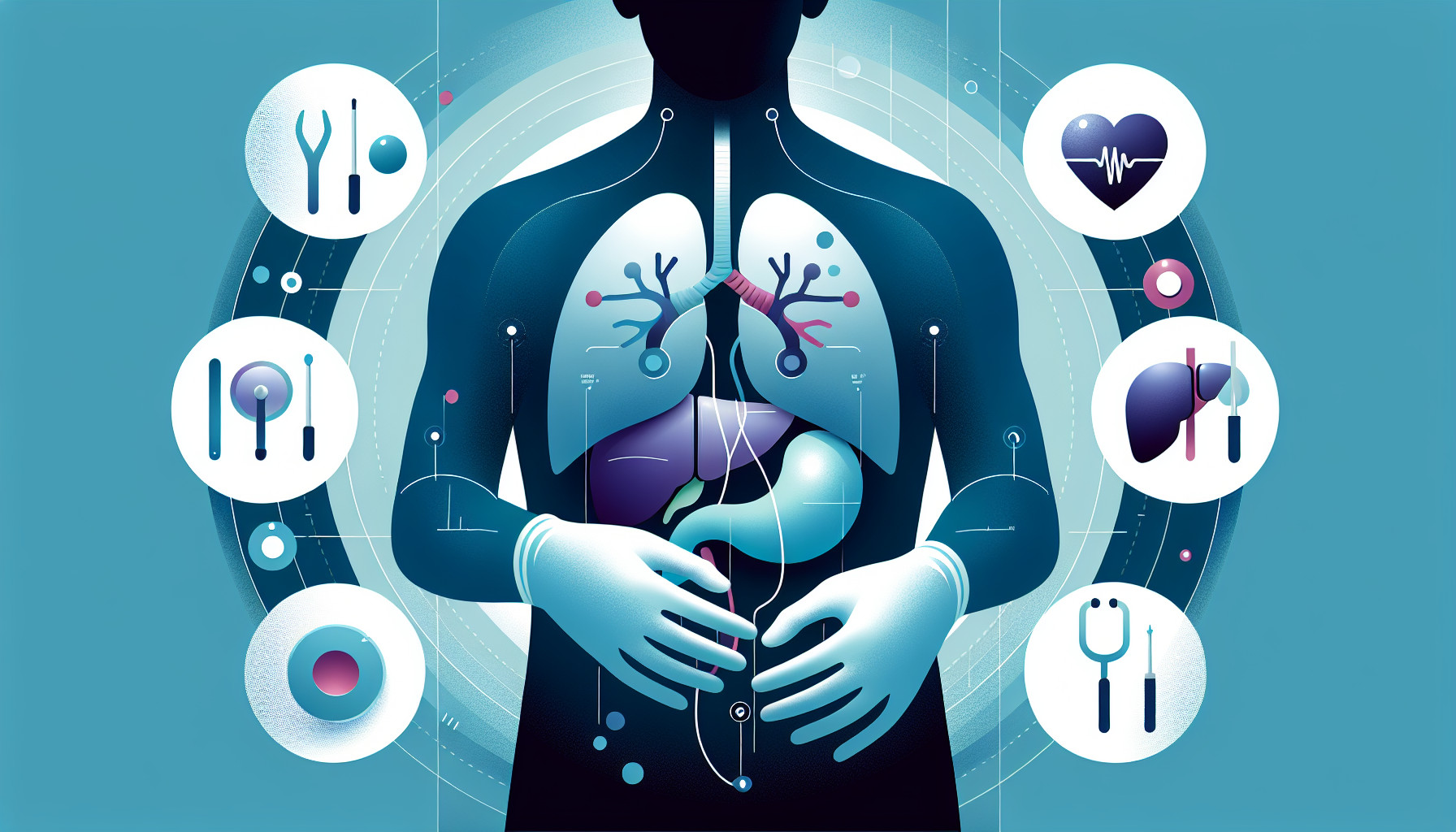Our Summary
This research paper discusses a medical procedure where a chest organ (like the heart or lungs) and the liver are transplanted together in patients who have two failing organs. This operation is done when replacing just one organ wouldn’t be enough to save the patient’s life. Even though this procedure is rare, the number of these combined liver-heart and liver-lung transplants is growing. The process is complicated and poses challenges for the anesthesiologist, with issues like significant blood loss, a long operation time, difficulties in taking the patient off heart-lung machine support, and problems with blood clotting. Despite the complexity, the success rate of these dual transplants is similar to transplants involving only one organ.
FAQs
- What is the purpose of combined transplantation of a thoracic organ and the liver?
- What are the challenges involved in the anesthetic management of combined liver and thoracic organ transplants?
- How does the outcome of combined liver-thoracic organ transplant compare to single-organ transplant?
Doctor’s Tip
One important tip that a doctor might tell a patient undergoing an organ transplant is to closely follow their post-operative care plan. This may include taking immunosuppressant medications as prescribed, attending regular follow-up appointments, and maintaining a healthy lifestyle to support the new organ. Adhering to these guidelines can help prevent rejection and ensure the long-term success of the transplant.
Suitable For
Patients who are typically recommended for organ transplant are those with end-stage organ failure, such as liver, heart, lung, or kidney failure, who have exhausted all other treatment options and have a limited life expectancy without a transplant. These patients may have conditions such as cirrhosis, cardiomyopathy, chronic obstructive pulmonary disease, or end-stage renal disease. The decision to recommend a transplant is based on a thorough evaluation of the patient’s medical history, physical condition, and overall prognosis. Transplant candidates must meet specific criteria set by transplant centers, including being in good overall health aside from the failing organ, having a support system in place for post-transplant care, and being willing and able to adhere to a strict medication regimen and follow-up care.
Timeline
Before organ transplant:
Diagnosis of end-stage organ failure: Patients are diagnosed with end-stage organ failure, such as heart or lung failure, and are evaluated by a transplant team to determine their eligibility for organ transplantation.
Pre-transplant evaluation: Patients undergo a series of tests and evaluations to assess their overall health and suitability for transplantation, including blood tests, imaging studies, and consultations with various specialists.
Placement on the transplant waiting list: Once deemed eligible for transplantation, patients are placed on the national organ transplant waiting list, where they wait for a suitable donor organ to become available.
Waiting for a donor organ: Patients may wait days, months, or even years for a suitable donor organ to become available, during which time they may experience worsening symptoms and deteriorating health.
After organ transplant:
Surgery: Patients undergo the organ transplant surgery, which can be a complex and lengthy procedure depending on the type of organ being transplanted. Anesthesia is administered, and the damaged organ is removed and replaced with the donor organ.
Post-operative care: After surgery, patients are closely monitored in the intensive care unit (ICU) for several days to weeks, depending on their recovery. They are given medications to prevent rejection of the donor organ and to manage any complications.
Recovery and rehabilitation: Patients begin the long process of recovery and rehabilitation, which may include physical therapy, occupational therapy, and counseling to help them adjust to life with a new organ.
Long-term follow-up: Patients require lifelong follow-up care to monitor the function of the transplanted organ, manage any complications or side effects of medications, and ensure overall health and well-being.
Overall, the process of organ transplantation is a complex and challenging journey for patients, but it offers the potential for improved quality of life and extended survival for those with end-stage organ failure.
What to Ask Your Doctor
What are the risks and benefits of combined organ transplant surgery compared to single-organ transplant?
How will the medications I need to take after the transplant affect my overall health and daily life?
What is the expected recovery time and rehabilitation process after a combined organ transplant?
How often will I need to follow up with my transplant team after surgery, and what long-term care will be required?
How will the combined organ transplant impact my overall quality of life and ability to participate in daily activities?
What are the potential complications or risks specific to combined organ transplant surgery, and how are they managed?
How will the coordination of care between my transplant team and other specialists be handled after surgery?
What are the success rates and outcomes for patients who have undergone combined organ transplant surgery?
How will my existing medical conditions or medications impact my eligibility for a combined organ transplant?
Are there any lifestyle changes or precautions I should take after the transplant surgery to ensure the best possible outcome?
Reference
Authors: Zeillemaker-Hoekstra M, Buis CI, Cernak V, Reyntjens KM. Journal: Best Pract Res Clin Anaesthesiol. 2020 Mar;34(1):101-108. doi: 10.1016/j.bpa.2020.01.001. Epub 2020 Jan 25. PMID: 32334780
